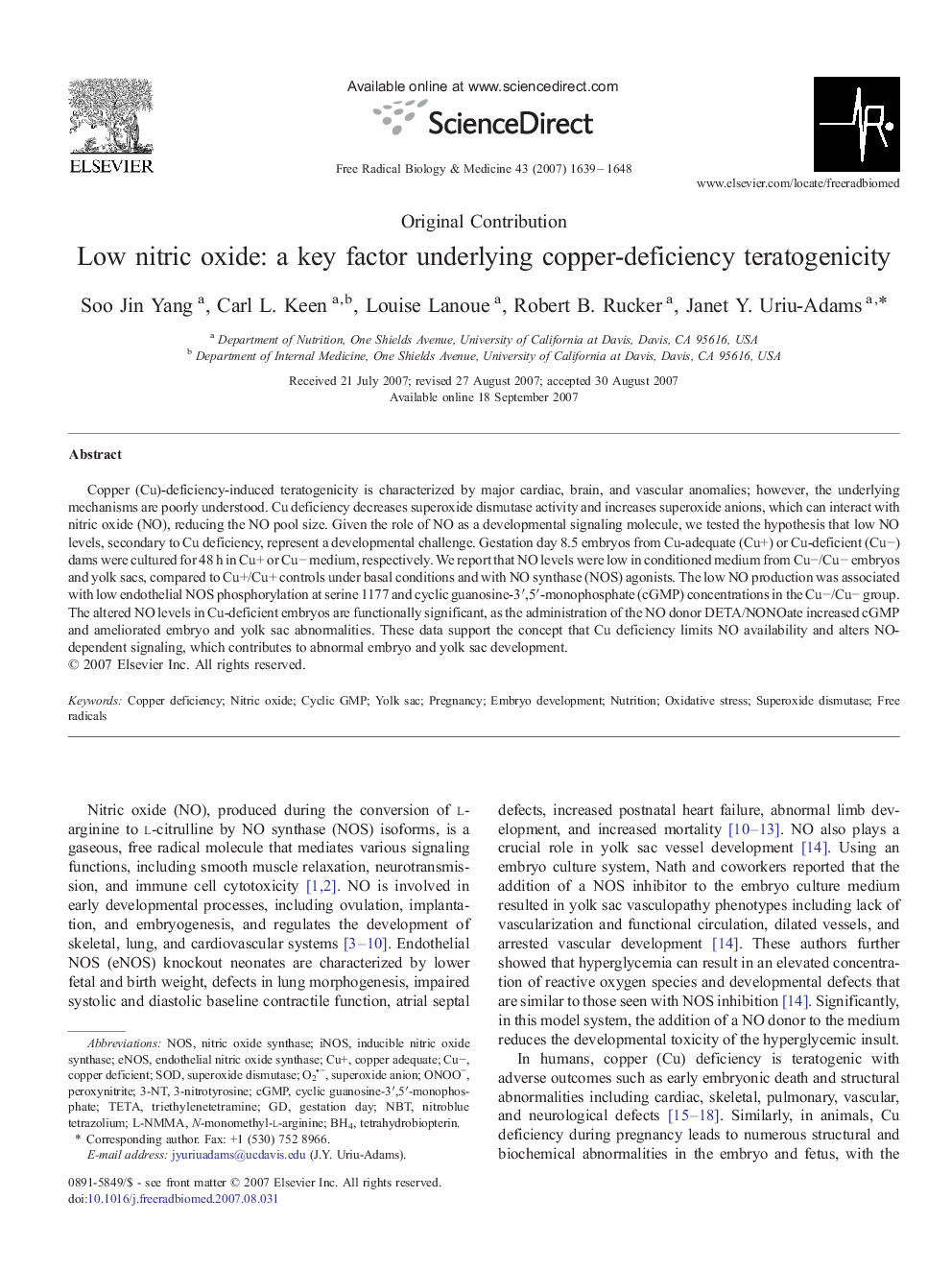| کد مقاله | کد نشریه | سال انتشار | مقاله انگلیسی | نسخه تمام متن |
|---|---|---|---|---|
| 1910508 | 1046774 | 2007 | 10 صفحه PDF | دانلود رایگان |

Copper (Cu)-deficiency-induced teratogenicity is characterized by major cardiac, brain, and vascular anomalies; however, the underlying mechanisms are poorly understood. Cu deficiency decreases superoxide dismutase activity and increases superoxide anions, which can interact with nitric oxide (NO), reducing the NO pool size. Given the role of NO as a developmental signaling molecule, we tested the hypothesis that low NO levels, secondary to Cu deficiency, represent a developmental challenge. Gestation day 8.5 embryos from Cu-adequate (Cu+) or Cu-deficient (Cu−) dams were cultured for 48 h in Cu+ or Cu− medium, respectively. We report that NO levels were low in conditioned medium from Cu−/Cu− embryos and yolk sacs, compared to Cu+/Cu+ controls under basal conditions and with NO synthase (NOS) agonists. The low NO production was associated with low endothelial NOS phosphorylation at serine 1177 and cyclic guanosine-3′,5′-monophosphate (cGMP) concentrations in the Cu−/Cu− group. The altered NO levels in Cu-deficient embryos are functionally significant, as the administration of the NO donor DETA/NONOate increased cGMP and ameliorated embryo and yolk sac abnormalities. These data support the concept that Cu deficiency limits NO availability and alters NO-dependent signaling, which contributes to abnormal embryo and yolk sac development.
Journal: Free Radical Biology and Medicine - Volume 43, Issue 12, 15 December 2007, Pages 1639–1648